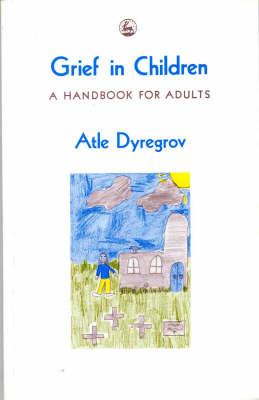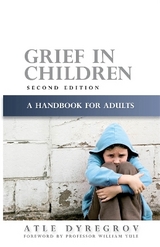
Grief in Children
Jessica Kingsley Publishers (Verlag)
978-1-85302-113-8 (ISBN)
- Titel ist leider vergriffen;
keine Neuauflage - Artikel merken
Many children experience the death of a relation or friend, or of other known adults or children. At such times it is important for parents, teachers, social workers and other responsible adults to know how to respond appropriately to the child's needs. This practical book explains children's understanding of death at different ages and gives a detailed outline of exactly how the adults around them can best help them cope with the death, whether it is of a parent or sibling, other relation or friend, or of class mate or teacher. It deals with the whole range of responses, from those on the physical and pragmatic level to psychological reactions which may be less obvious to the caring adult, and describes the methods that have been shown to work best. The book addresses in depth the consequences of sudden death - sudden and dramatic deaths create more anxiety and give rise to more reactions than anticipated deaths. One chapter discusses how the matter should be handled at the child's school and also provides guidelines for dealing with a larger-scale tragedy where several people known to the children die at one time. The author also explains when it is necessary to involve expert professional help for a child, and discusses the value of bereavement groups for children. The final chapter concentrates on the needs of the caregiver.
Dr Atle Dyregrov is a clinical psychologist and Director of the Center for Crisis Psychology in Bergen, Norway, which he founded with a colleague in 1988. He is a member of the executive board of The Children and War Foundation and a founding member of the European Society for Traumatic Stress Studies. Dr Dyregrov is the author of numerous publications, journal articles, and books.
Introduction.1. Children's Grief and Crisis Reaction. Children's understanding of death at different age levels. Immediate grief reactions in children. Usual grief reactions in children. The difference between trauma and grief. 2. Different Types of Death. The death of a parent. The death of a sibling. The death of a grandparent. The death of a friend. Children and suicide. Other deaths. 3. Death and Crisis at Different Developmental Levels. 4. What Makes the Grief Worse? 5. Sex Differences in Children's Grief. 6. Care for Children in Grief and Crisis. Counselling the parents. Presenting children with the news of a death. Children's participation in rituals. 7. Guidelines for Taking Care of Children's Needs. Open and direct communication. Death following an illness. Making the loss real. Allow time for cognitive mastery. Stimulate emotional coping. 8. Handling Death in the Kindergarten and at School. Being prepared before a death occurs. Teachers as a resource group. Teachers' own needs. Terminal illness of a child. The needs of individual students. How to give notification of death at school. Rituals in school. The funeral. Classroom commemoration. Classroom meeting about the death. Use of other expressive means. Visiting the bereaved parents. Contact between school and home following death. Commemorating the child. Handling of death in the kindergarten. 9. Crisis- or Grief-Therapy for Children. 10. Bereavement Groups for Children. 11. Caring for Oneself Appendix A: Grief in Children - Guidelines for Care. References.
| Erscheint lt. Verlag | 1.5.1991 |
|---|---|
| Vorwort | William Yule |
| Verlagsort | London |
| Sprache | englisch |
| Maße | 140 x 216 mm |
| Themenwelt | Sachbuch/Ratgeber ► Gesundheit / Leben / Psychologie ► Psychologie |
| Geisteswissenschaften ► Psychologie ► Entwicklungspsychologie | |
| Sozialwissenschaften ► Soziologie ► Mikrosoziologie | |
| ISBN-10 | 1-85302-113-X / 185302113X |
| ISBN-13 | 978-1-85302-113-8 / 9781853021138 |
| Zustand | Neuware |
| Haben Sie eine Frage zum Produkt? |
aus dem Bereich



